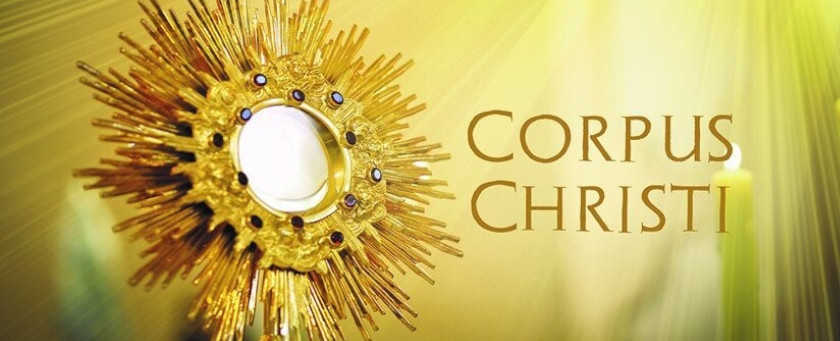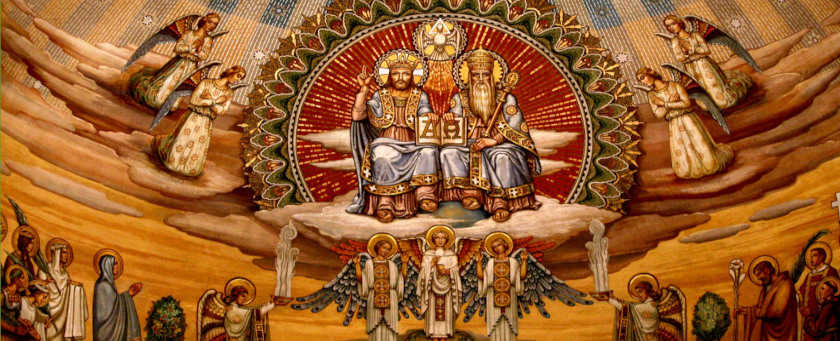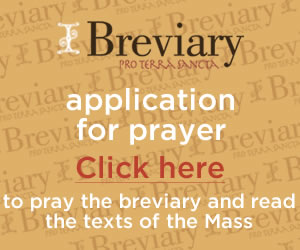Christ is Truly and Substantially Present in the Eucharist
Solemnity of The Most Holy Body & Blood of Christ (Corpus Christi), Year C

(Audio recorded live, 21 June 2025)
Readings:
Gn. 14:18-20; Ps. 110; 1 Cor. 11:23-26; Lk. 9:11b-17
Today, we celebrate the Solemnity of the Most Holy Body and Blood of Christ, Corpus Christi. Our new Pope Leo is an Augustinian. On the day of his election he introduced himself as a son of Augustine. This is evident by his religious profession, the fact that he spent two terms as the prior general of the Augustinians, and his many references to the great doctor of the Church. We may find it interesting to note that today’s feast of Corpus Christi is also connected to the Augustinians. In fact, the feast arose at the insistence of St. Juliana of Mont Cornillon, in Belgium during the thirteenth century, who having been orphaned at a young age was taken in by Augustinian nuns in Belgium. She herself eventually became the superioress of the order. Because of her devotion to the Blessed Sacrament, she had a vision of a full Moon with a dark spot. This was interpreted as the absence of a Solemnity to the Most Holy Body and Blood of Christ. And so, Juliana got to work promoting her vision to her bishop, who then brought it to Rome. In the year 1264, Pope Urban IV extended the feast to the Universal Church. For nearly 800 years, we might say that dark spot on the Moon has been radiant with the light of Christ truly present in the Most Blessed Sacrament.
At the heart of today’s celebration is the institution of the Eucharist. St. Paul reminds us that he is simply handing on what he received. He says, “I received from the Lord what I also handed on to you, that the Lord Jesus, on the night he was handed over, took bread, and, after he had given thanks, broke it and said, ‘This is my body that is for you. Do this in remembrance of me.’ In the same way also the cup, after supper, saying, ‘This cup is the new covenant in my blood. Do this, as often as you drink it, in remembrance of me.’” These are the oldest extant words of the institution of the Eucharist in the Bible. St. Paul was writing his letter at least a decade before the first gospel was written. And in these words we see first the handing on of his own faith as well as the command of Jesus to “do this in remembrance of me.”
Faith and a command. What comes first? If one were to accept a command without faith, they would simply be going through the motions, and their actions would be empty, devoid of meaning. But, if one carries out the command in faith, and faith inspires their actions, then it is not they who act alone, but Christ in them. As St. Paul says, “I have been crucified with Christ; yet I live, no longer I, but Christ lives in me; insofar as I now live in the flesh, I live by faith in the Son of God who has loved me and given himself up for me” (Gal. 2:19b-20).
We cannot talk about the Eucharist without acknowledging the sacrifice of Christ, for the Eucharist is the one Sacrifice of Calvary. The priest re-presents the same sacrifice of Jesus at every Mass. This sacrifice is for the forgiveness of sins, as Jesus himself reminded his disciples at the Lord’s Supper. It establishes the New Covenant in his blood, and the way in which his Sacrifice may benefit all generations. We are born with Original Sin, but thanks to the Sacrifice of Christ, we are freed from that sin and called to walk as brothers and sisters in Christ, sons and daughters of the Father. If not for Jesus’ Sacrifice, there would be no appeasing God’s wrath. But, as St. John says, “My children, I am writing this to you so that you may not commit sin. But if anyone does sin, we have an Advocate with the Father, Jesus Christ the righteous one. He is expiation for our sins, and not for our sins only but for those of the whole world” (1 Jn. 2:1-2). And as the Letter to the Hebrews says, “Therefore, he is always able to save those who approach God through him, since he lives forever to make intercession for them” (Heb. 7:25).
Our faith teaches that Jesus died for our sins, rose on the third day, ascended into heaven, and sits at the right hand of the Father where he intercedes for us. Our faith also teaches that Jesus remains with us. As he said in the Gospel of Matthew: “And behold, I am with you always, until the end of the age” (Matt. 28:20b). Indeed, this is the last sentence in the Gospel of Matthew—an affirmation that the True Presence of Christ remains with his disciples.
The way in which Christ is truly present to us, even to this day, is through the Most Blessed Sacrament of the Altar. The Catechism of the Catholic Church teaches that Jesus is truly and substantially present in the Eucharist. It says: “In the most blessed sacrament of the Eucharist ‘the body and blood, together with the soul and divinity, of our Lord Jesus Christ and, therefore, the whole Christ is truly, really, and substantially contained.’ ‘This presence is called ‘real’ … it is a substantial presence by which Christ, God and man, makes himself wholly and entirely present” (CCC 1374). This is the same presence that inspired St. Juliana to promote a solemnity for the the Most Holy Body and Blood of Christ.
We see how the presence of Jesus is extended throughout the Church in the multiplication of loaves and fish. When the disciples tell Jesus to dismiss the crowds because there is not enough food for them, Jesus says, “Give them some food yourselves.” In other words, he is giving them a foretaste of what they will be doing as future priests of the Eucharist. This also shows how the True Bread of Life will give nourishment to a multitude of faithful followers.
May our celebration of this great feast of Corpus Christi strengthen our faith in the Real Presence of Jesus in the Eucharist, and may our witness to this great miracle in our midst bring us ever closer to him who has called us out of darkness into his own wonderful light.




Twitter
Facebook
Pinterest
Email